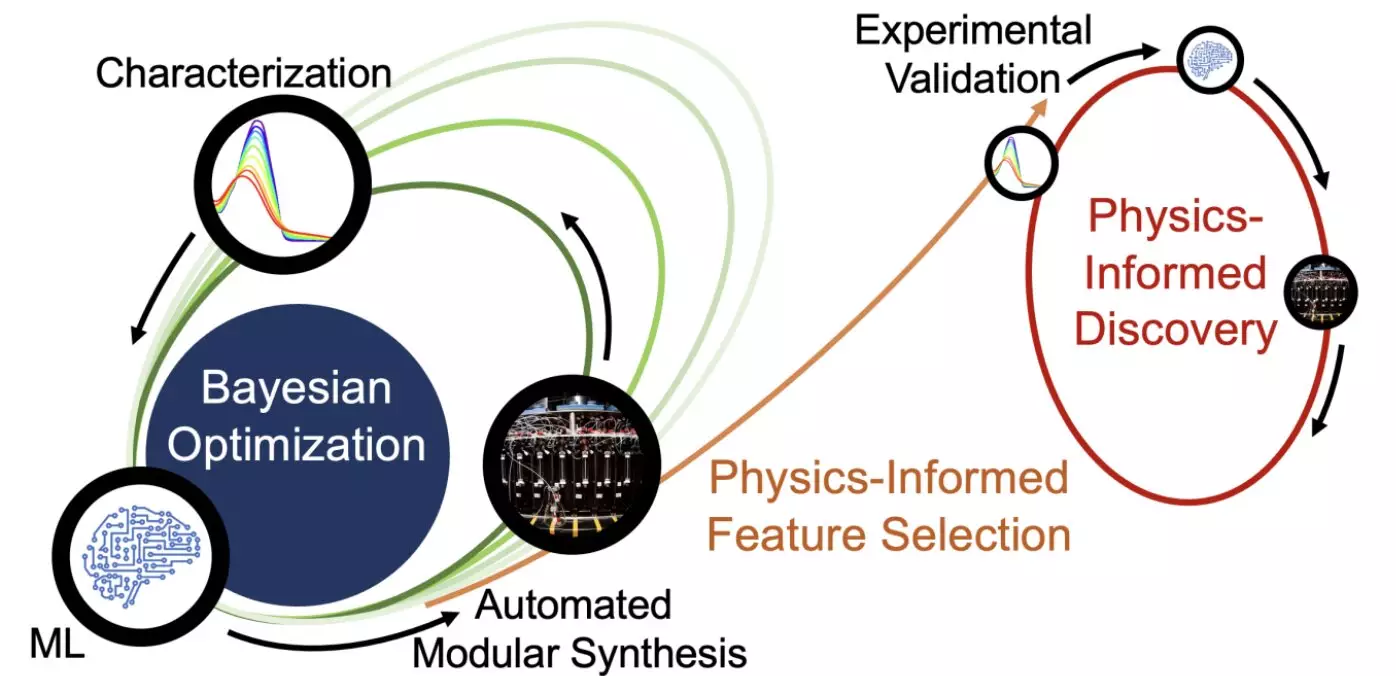The rise of artificial intelligence (AI) in scientific research has offered unprecedented opportunities for innovative discoveries. However, one of the most significant challenges remains the enigmatic nature of AI’s decision-making processes, often described as the “AI black box.” In essence, while AI excels at optimizing outcomes, it provides little insight into the rationale behind its conclusions. This limitation can be especially frustrating for fields such as chemistry, where understanding the underlying principles is crucial. Fortunately, a groundbreaking approach spearheaded by a multidisciplinary team at the University of Illinois Urbana-Champaign is shedding light on this issue in the quest for advanced light-harvesting molecules to enhance solar energy capture.
The research was co-led by a team comprising esteemed professors from various departments, including Martin Burke (Chemistry), Ying Diao (Chemical and Biomolecular Engineering), Nicholas Jackson (Chemistry), and Charles Schroeder (Materials Science and Engineering). Their collaboration with Alán Aspuru-Guzik from the University of Toronto exemplifies the power of interdisciplinary strategies in tackling complex scientific problems. Their recent publication in the journal *Nature* marks a significant step forward in both AI application and solar technology development.
Through their integration of AI with automated chemical synthesis and experimental validation, the team was able to transform the previously opaque black box of AI into a more transparent system. By understanding the fundamental principles that govern molecular stability, researchers have established a new pathway toward creating light-harvesting molecules that promise enhanced solar energy efficiency.
One of the major obstacles facing the commercialization of organic solar cells is their intrinsic instability. Unlike traditional silicon-based panels, organic photovoltaics utilize flexible materials that have shown great promise in converting solar energy effectively. However, since the 1980s, researchers have grappled with the issue of light-induced degradation of these materials, limiting their practicality in real-world applications.
Ying Diao, one of the project leaders, emphasized the importance of solving these stability issues. “High-performance materials degrade when exposed to light, which is not what you want in a solar cell,” she noted. Addressing these long-standing challenges could pave the way for flexible, efficient solar technologies that leverage heat and infrared light.
The Closed-Loop Transfer Process: A Game Changer
Central to their methodology is a unique system termed “closed-loop transfer.” In this framework, an AI-guided process iteratively refines chemical candidates based on their photostability. By guiding the synthesis of a series of new molecules and systematically testing their properties, researchers could identify the crucial structural features that enhance stability.
As a result, the team synthesized 30 new chemical candidates over a span of five experimental cycles, utilizing an automated synthesis platform developed in Burke’s laboratory. This modular approach allows for rapid experimentation, with the AI constantly updating its suggestions based on newfound data, thereby optimizing future rounds of synthesis.
Unlike conventional AI-driven methodologies that often focus solely on final product selection, the Illinois team’s closed-loop transfer process delved deeper into understanding the fundamental mechanics of stability in light-harvesting molecules. By employing advanced algorithms to analyze the characteristics of synthesized molecules, researchers were able to develop predictive models of the photostability traits that matter most.
Nicholas Jackson articulated the transformative potential of this approach, stating, “We’re using AI to generate hypotheses that we can validate to then spark new human-driven campaigns of discovery.” The insights gained from this study have effectively simplified the screening process for discovering new chemical candidates—moving away from blind explorations to a more targeted investigation based on established principles.
A Proof of Principle and Future Prospects
To establish the validity of their findings, the research team conducted experiments on three structurally diverse molecules possessing a specific high-energy attribute. Remarkably, they confirmed that the choice of solvents significantly influenced the photostability of these compounds, enhancing stability up to four times compared to prior iterations.
This pivotal research is more than just a proof of principle; it represents a promising new frontier for both AI applications and materials development. As Charles Schroeder reflected, “We’re confident we can address other material systems, and the possibilities are only limited by our imagination.” The vision for the future involves developing an interactive interface where researchers can input desired chemical functions and receive AI-generated hypotheses for further testing.
The collaborative exploration undertaken by the University of Illinois team reveals the transformative potential of merging AI with experimental methodologies. By decoding the complexities of the AI black box, researchers have not only enhanced our understanding of molecular stability but also created a framework for future discoveries in solar energy technology. As the field continues to evolve, the integration of advanced AI-driven strategies is poised to revolutionize materials science, paving the way for more efficient, flexible, and enduring solar solutions.


Leave a Reply